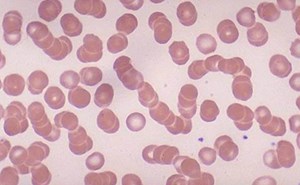
Clinical Phenotypes in EM-Critical Care: Bringing Precision Medicine to the ED and ICU
Margaret Davis, MD, MPH
University of Washington Department of Emergency Medicine
In critical care, heterogeneity among patients with similar diagnoses often leads to varied responses to treatments, complicating care delivery and clinical outcomes. Over recent years, researchers have recognized and studied subgroups of critical illness. The identification of clinical phenotypes is a critical step toward personalized medicine. These phenotypes – often classified based on specific clinical features, pathophysiological mechanisms, and biological markers – can transform how intensivists approach complex syndromes like acute respiratory distress syndrome (ARDS), sepsis, heart failure, cardiac arrest, and others.
This research is a priority, because the findings of so many of the recent clinical trials in common critical illnesses have been negative. These studies are well designed with large sample sizes but find no effect of interventions which mechanistically would seem to be beneficial.1,2,3 Why is this? Are there simply no more beneficial interventions for the care of critical illness? Of course not. Until the 18th century, there was one disease called “diabetes,” which was a syndrome of excessive urination. Only after tasting the urine of different patients with diabetes and recognizing some tasted sweet and some did not, did Dr. Johan Peter Frank identify two subphenotypes of the syndrome. With this, he defined the two distinct disease entities of diabetes mellitus and diabetes insipidus.4 Could our current classifications of critical illness syndromes be just as ill-defined?
It is important to define terms when it comes to phenotypes. A phenotype itself is simply an observable feature or syndrome (eg, ARDS or sepsis). A subphenotype is a subgroup of a phenotype based on a shared pattern of measurable properties (eg, hyperinflammatory vs hypoinflammatory ARDS). Finally, an endotype is a subphenotype with a distinct functional mechanism, which may or may not be associated with a treatment response. Current research has focused on identifying subphenotypes, often using a method called latent class analysis that uses probabilistic modeling to identify groups with similar characteristics.
One of the most exciting areas of research in clinical subphenotyping has been in ARDS. Multiple studies have identified two primary subphenotypes of ARDS - hyperinflammatory and hypoinflammatory - characterized by different levels of systemic inflammation, outcomes, and responses to therapies.5 Hyperinflammatory patients, for instance, show elevated cytokine levels and tend to have higher mortality and more ventilator days.6 A post-hoc analysis of ARDSnet trials found that the three inflammatory markers IL-8, bicarbonate, and Protein C, were the best model for predicting hyper- versus hypoinflammatory ARDS.7 A secondary analysis of the HARP-2 trial – which initially found no effect of simvastatin in ARDS – found a survival benefit for hyperinflammatory ARDS patients and none for hypoinflammatory patients.8 The ability to differentiate these subtypes has led to ongoing targeted clinical trials aiming to tailor interventions more effectively based on phenotype.
Sepsis is the ultimate heterogenous syndrome where any infection can affect any organ system and is the most active area in precision medicine research within critical care. A combined analysis of published RCTs, totaling over 60,000 patients, has found four subphenotypes of sepsis: α, β, γ, and δ.9 Each subphenotype is associated with unique clinical features and mortality rates. δ phenotype patients, characterized by liver dysfunction and shock, exhibited the highest mortality. Endotypes have also been defined in sepsis. The sepsis response signature (SRS) endotype was found based on seven transcriptomics which divide patients into SRS1, who are relatively immunosuppressed, and SRS2, who are immunocompetent. Hydrocortisone was found to significantly increase mortality in SRS2 but not in SRS1.10
The identification of clinical phenotypes promises to optimize care by reducing treatment variability and improving outcomes. While early studies have made substantial strides, current research is focused on integrating biomarkers, genetic profiles, and machine learning techniques to refine these classifications further. Future studies will likely explore how combining real-time data from electronic medical records can provide dynamic phenotyping, guiding adaptive therapies in real-time. For example, the upcoming Precision Resuscitation with Crystalloids in Sepsis (PRECISE) randomized control trial plans to use subphenotypes obtained in real-time from the electronic medical record to identify a sepsis population in the ED and ICU most likely to benefit from receiving balanced crystalloids compared to saline.11 For further reading, a recent review by Gordon et al12 provides an excellent summary of current research in phenotypes in critical care and serves as a call to action for collaborative research.
These diagnostics and therapeutics being studied are not yet ready for prime time in daily clinical practice. However, it demonstrates that it is vital for everyone caring for critically ill patients to recognize that this is a heterogeneous population which requires nuanced care. A negative clinical trial should not be dismissed as ineffective, because there may be a subphenotype of the syndrome that could benefit from these interventions. It may not be as simple as tasting a patient’s urine, but this approach holds immense potential for guiding individualized treatment strategies and improving patient outcomes across a spectrum of critical conditions.
- Dankiewicz J, Cronberg T, Lilja G, et al. Hypothermia versus normothermia after out-of-hospital cardiac arrest. N Engl J Med. 2021;384(24):2283-2294.
- National Heart L and Blood Institute PETAL Clinical Trials Network. Early high-dose vitamin D3 for critically ill, vitamin D–deficient patients. N Engl J Med. 2019;381(26):2529-2540.
- Bernard SA, Bray JE, Smith K, et al. Effect of lower vs higher oxygen saturation targets on survival to hospital discharge among patients resuscitated after out-of-hospital cardiac arrest: the EXACT randomized clinical trial. Jama. 2022;328(18):1818-1826.
- Valenti G, Tamma G. History of diabetes insipidus. G Ital Nefrol. 2016;33(Suppl 66):1-6.
- Sinha P, Calfee CS, Cherian S, et al. Prevalence of phenotypes of acute respiratory distress syndrome in critically ill patients with COVID-19: a prospective observational study. Lancet Respir Med. 2020;8(12):1209-1218.
- Wilson JG, Calfee CS. ARDS subphenotypes: understanding a heterogeneous syndrome. Annu Update Intensive Care Emerg Med 2020. Published online 2020:67-79.
- Sinha P, Delucchi KL, McAuley DF, O’Kane CM, Matthay MA, Calfee CS. Development and validation of parsimonious algorithms to classify acute respiratory distress syndrome phenotypes: a secondary analysis of randomised controlled trials. Lancet Respir Med. 2020;8(3):247-257.
- Calfee CS, Delucchi KL, Sinha P, et al. Acute respiratory distress syndrome subphenotypes and differential response to simvastatin: secondary analysis of a randomised controlled trial. Lancet Respir Med. 2018;6(9):691-698.
- Seymour CW, Kennedy JN, Wang S, et al. Derivation, validation, and potential treatment implications of novel clinical phenotypes for sepsis. Jama. 2019;321(20):2003-2017.
- Antcliffe DB, Burnham KL, Al-Beidh F, et al. Transcriptomic signatures in sepsis and a differential response to steroids. From the VANISH randomized trial. Am J Respir Crit Care Med. 2019;199(8):980-986.
- Bhavani SV, Holder A, Miltz D, et al. The Precision Resuscitation With Crystalloids in Sepsis (PRECISE) Trial: A Trial Protocol. JAMA Netw Open. 2024;7(9):e2434197-e2434197. doi:10.1001/jamanetworkopen.2024.34197
- Gordon AC, Alipanah-Lechner N, Bos LD, et al. From ICU Syndromes to ICU Subphenotypes: Consensus Report and Recommendations for Developing Precision Medicine in the ICU. Am J Respir Crit Care Med. 2024;210(2):155-166.



